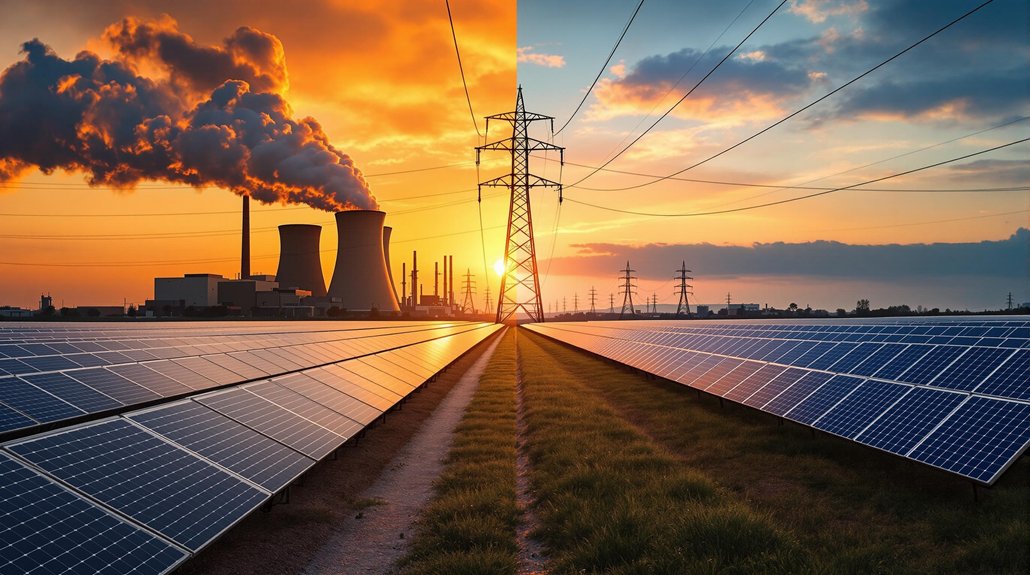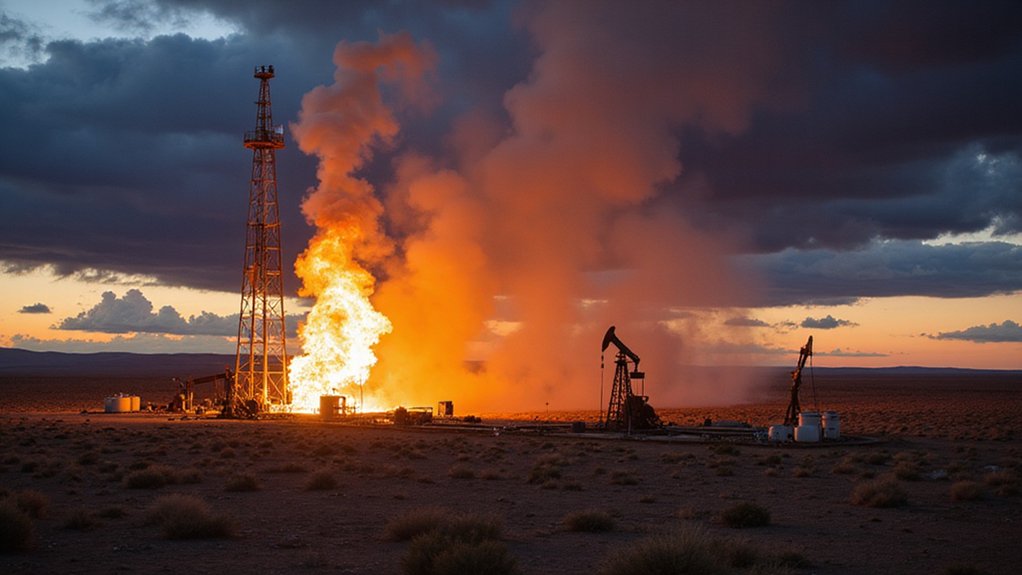The DOE’s energy strategy presents a puzzling contradiction. While slashing fossil fuel R&D by millions, they’ve pumped billions into renewables—despite fossil fuels providing 80% of global energy. Carbon capture technology, essential for climate goals, gets shortchanged. Meanwhile, cheaper renewables paradoxically boost overall energy consumption. Fossil fuels aren’t vanishing overnight, folks. Making them cleaner now requires research, not budget cuts. Politics vs. practicality? The energy reality gets messier below the surface.
Why is the Department of Energy cutting funding for fossil fuel research when these energy sources still power most of the world? The DOE’s fiscal year 2017 budget slashed fossil energy R&D by $32 million while proposing a massive $2.1 billion increase for renewable energy. Makes perfect sense, right? Except for one tiny detail—fossil fuels provide over 80% of global energy.
Even with ambitious climate goals, the International Energy Agency estimates fossil fuels will still account for 40% of global energy use by 2050. That’s not exactly disappearing overnight.
Meanwhile, coal consumption is actually increasing globally, especially in developing nations like India where demand for cheap coal power is surging. African countries? They rely on fossil fuels for a whopping 77% of their electricity production.
The irony is thick. Carbon capture technology—which requires sustained research—is critical for meeting Paris Climate Agreement targets. The U.S. could lead efforts to solve these technological challenges, but instead, we’re cutting budgets. Brilliant strategy.
The ultimate climate policy paradox: slashing research for the very technologies we need most to meet our carbon goals.
The DOE’s Fossil Energy and Carbon Management Office (FECM) handles coal, petroleum, and natural gas R&D programs while maintaining emergency petroleum reserves. They’re also tasked with developing technologies to reduce carbon emissions. But hard to do that with shrinking funds.
There’s a strange paradox at work here. While the DOE cuts fossil fuel research, they’ve recently invested $17.4 million in 19 university-led research projects focused on carbon capture and critical minerals. Mixed signals, much?
The energy sector faces another paradox: greater efficiency in renewables actually increases energy demand. Renewable power generation costs have plummeted 85% from 2010-2020, but cheaper renewables drive electrification and innovation, boosting consumption overall. Even as renewables grow, fossil fuels will maintain a critical safety net role in our increasingly electrified world.
Plus, renewable infrastructure requires energy-intensive resource extraction. Continued fossil fuel consumption leads to environmental cleanup expenses after inevitable spills and accidents, adding hidden costs to our energy system.
The DOE’s FECM is actually focused on minimizing climate impacts of fossil fuels while developing pathways to net-zero emissions across the U.S. economy.
Bottom line? The DOE’s current approach seems disconnected from reality. Fossil fuels aren’t disappearing tomorrow, and we need research to make them cleaner today. Sometimes the most practical solution isn’t the most politically appealing one.









